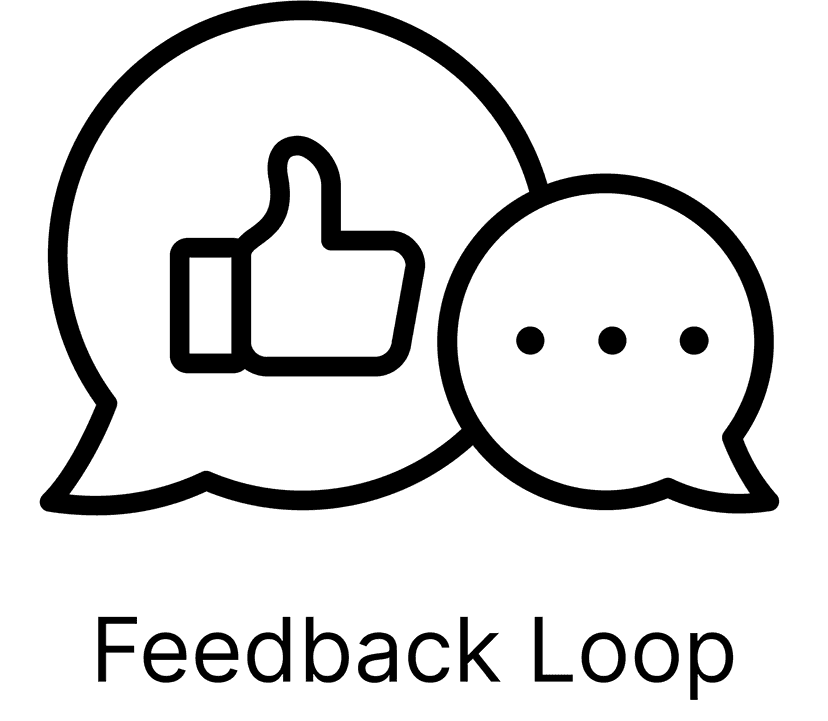Feedback Loop

What is a feedback loop?
Definition
A feedback loop is a process in which the outputs of a system are used as inputs, either to modify or improve the system's performance. In the context of startups, feedback loops help founders make better decisions and improve their products or services based on customer feedback and data analysis.
Analogy
Imagine you're learning how to ride a bike. As you ride, you constantly adjust your balance and steering based on the feedback your body receives from the bike's movement. This feedback helps you learn and improve your riding skills, allowing you to ride the bike more efficiently and effectively over time.
In other words
A feedback loop is a continuous process of learning and improvement based on the information gathered from a system's performance.
Why is a feedback loop important?
It's one thing to know what a feedback loop is, but that is worthless if you don't know why you should know what a feedback loop is in the first place. Let's break down the importance of this tech term based on two high-level categories. We'll walk through an explanation as well as provide a score, 1-10, that shows you how much you should care about feedback loops.
Pre-Product: 10/10
If you don't have a product yet, feedback loops are crucial for validating your ideas and ensuring you're building something that your target audience actually wants. By collecting feedback from potential customers, you can refine your product idea and avoid wasting time and resources on features that won't resonate with your audience.
Live Product: 10/10
If you have a live product, feedback loops are essential for continuous improvement and growth. By gathering and analyzing customer feedback, you can identify areas where your product can be improved, allowing you to make data-driven decisions and prioritize features or updates. This, in turn, helps you create a better product and user experience, leading to increased customer satisfaction and retention.
Examples of feedback loops
So you know what a feedback loop is, by definition. You know if you should care about it or not depending on your situation as a business/company/product. To dig in deeper, we will walk through some tools and processes so we can make sure you really have a solid grasp on feedback loops.
Net Promoter Score (NPS)
Net Promoter Score is a customer satisfaction metric that measures how likely your customers are to recommend your product or service to others. By regularly collecting NPS data, you can gauge customer sentiment and identify areas for improvement, creating a feedback loop that drives continuous product enhancements.
User Surveys and Interviews
Conducting user surveys and interviews allows you to gather direct feedback from your customers about their experiences with your product. This feedback can be used to identify pain points, uncover new feature ideas, and prioritize improvements, creating a feedback loop that helps you build a better product.
A/B Testing
A/B testing is a method of comparing two versions of a product feature or marketing campaign to determine which one performs better. By continuously running A/B tests and analyzing the results, you can optimize your product and marketing strategies based on real user data, creating a feedback loop that drives growth and success.
Key Takeaways:
- A feedback loop is a continuous process of learning and improvement based on the information gathered from a system's performance.
- If you do not yet have a product, feedback loops are crucial for validating your ideas and ensuring you're building something that your target audience actually wants.
- If you do have a product, feedback loops are essential for continuous improvement and growth, helping you create a better product and user experience.
- Examples of feedback loops include Net Promoter Score, user surveys and interviews, and A/B testing.

